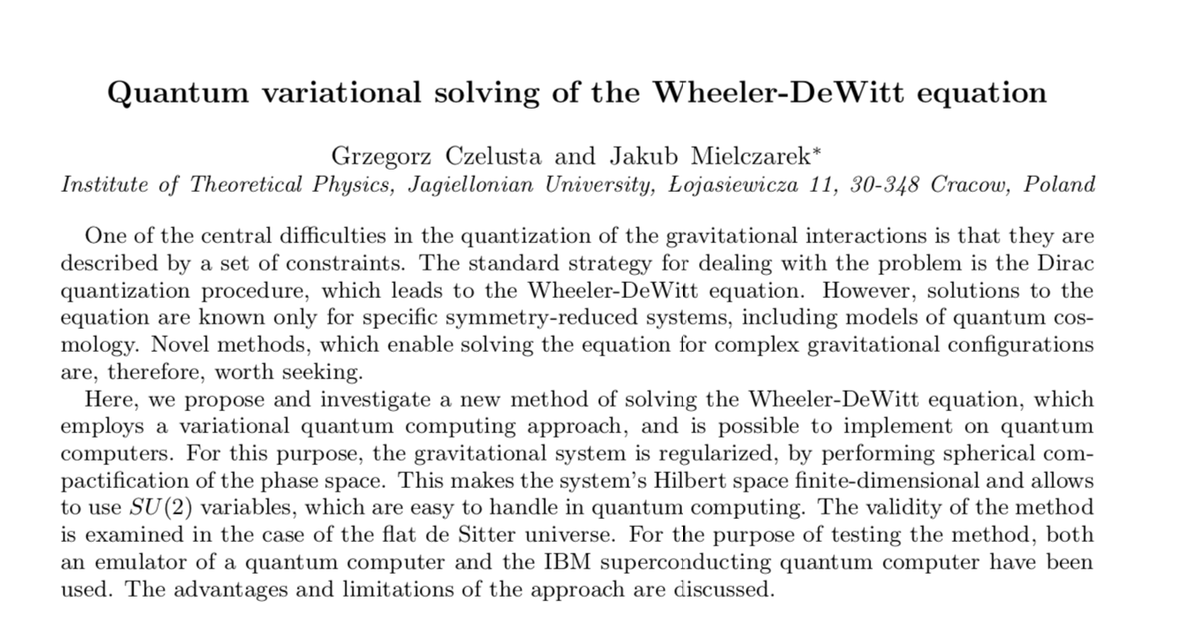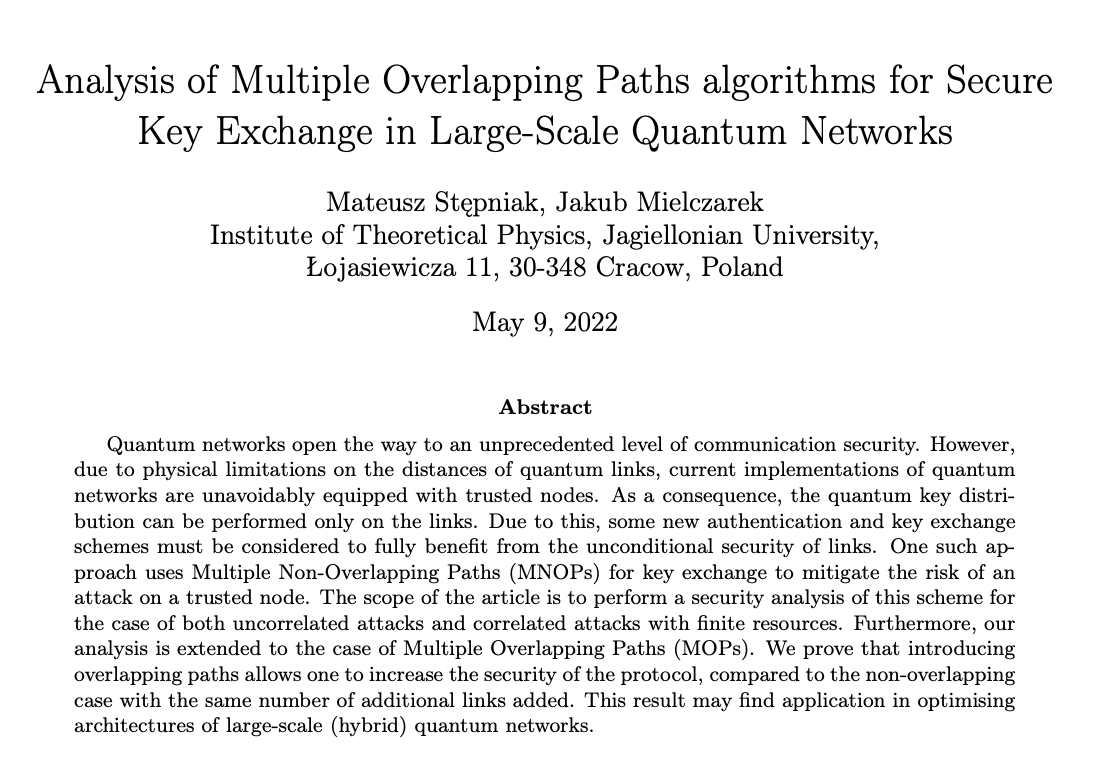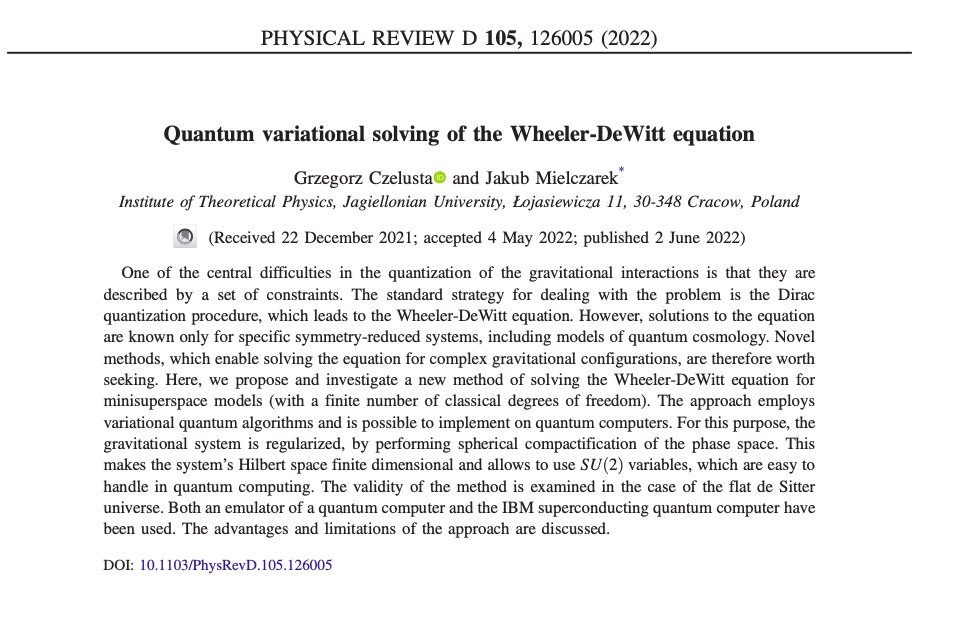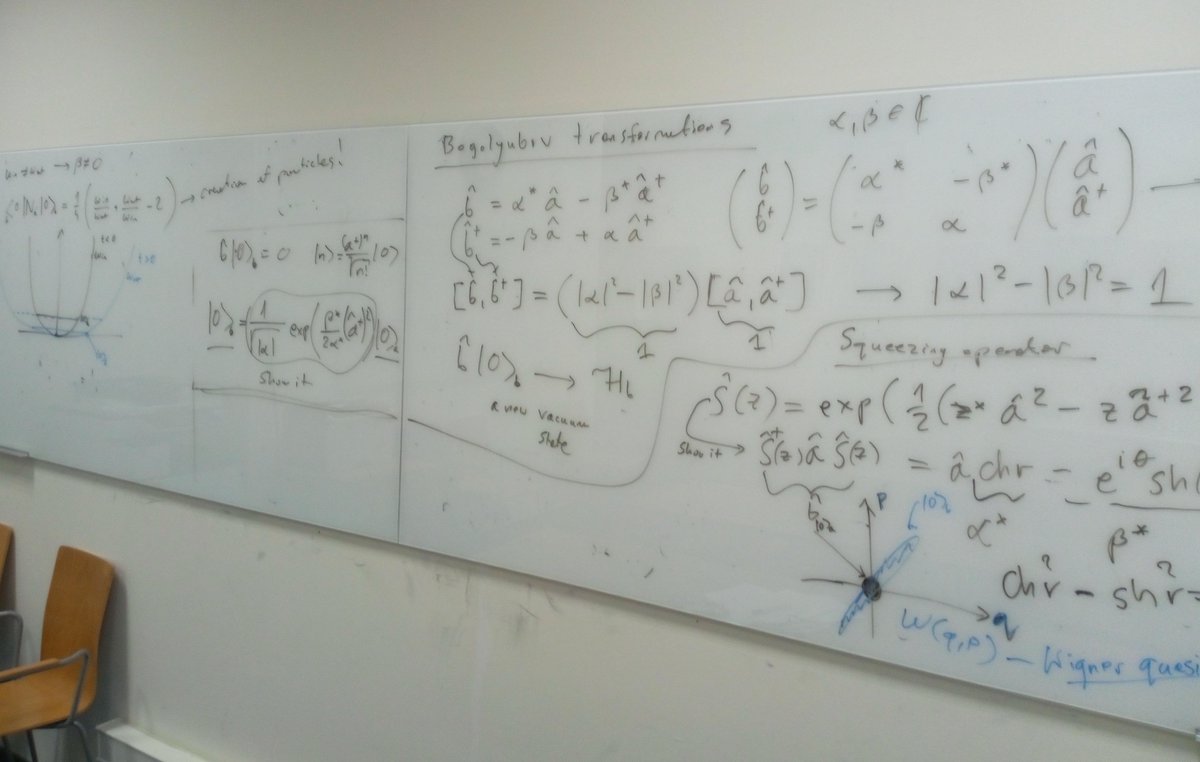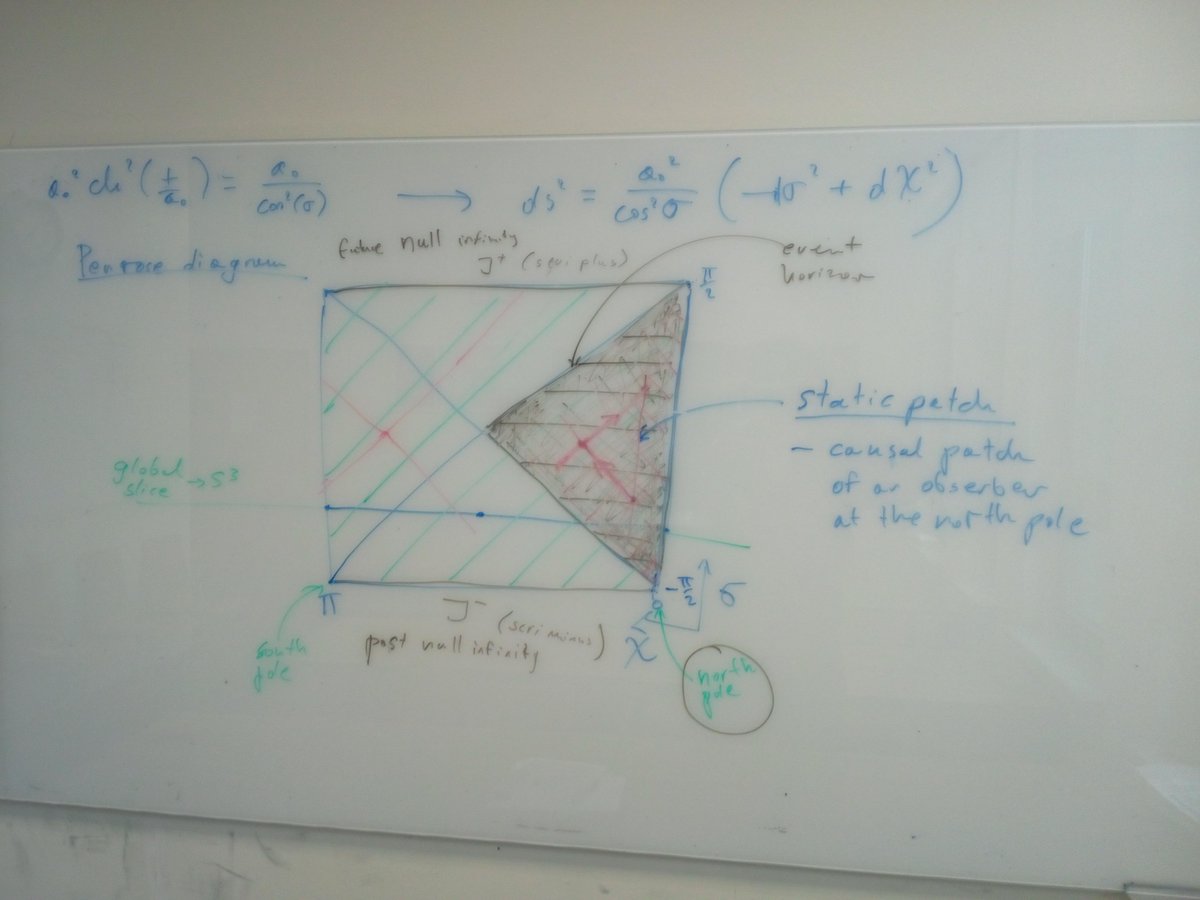
Quantum Cosmos Lab
@quantcosm
We are an interdisciplinary research team merging theoretical physics with advanced technologies. @JagiellonskiUni
ID: 1171149059505250307
http://www.quantumcosmos.org 09-09-2019 19:51:39
164 Tweet
858 Takipçi
479 Takip Edilen



The COST Action COST CA18108: QG-MM 🏳️🌈 review paper “#Quantum #gravity phenomenology at the dawn of the #multimessenger era - A review,” to which we had the pleasure to contribute, has recently been published in the Progress in Particle and Nuclear Physics: sciencedirect.com/science/articl…


Let us recommend the interdisciplinary workshop WMLQ 2022 which will start tomorrow in Warsaw. Quantum Cosmos Lab will be represented by Artur Miroszewski (PostDoc) and Grzegorz Czelusta (Ph.D. student), who will give their talks on the first day of the workshop. #Quantum #ML
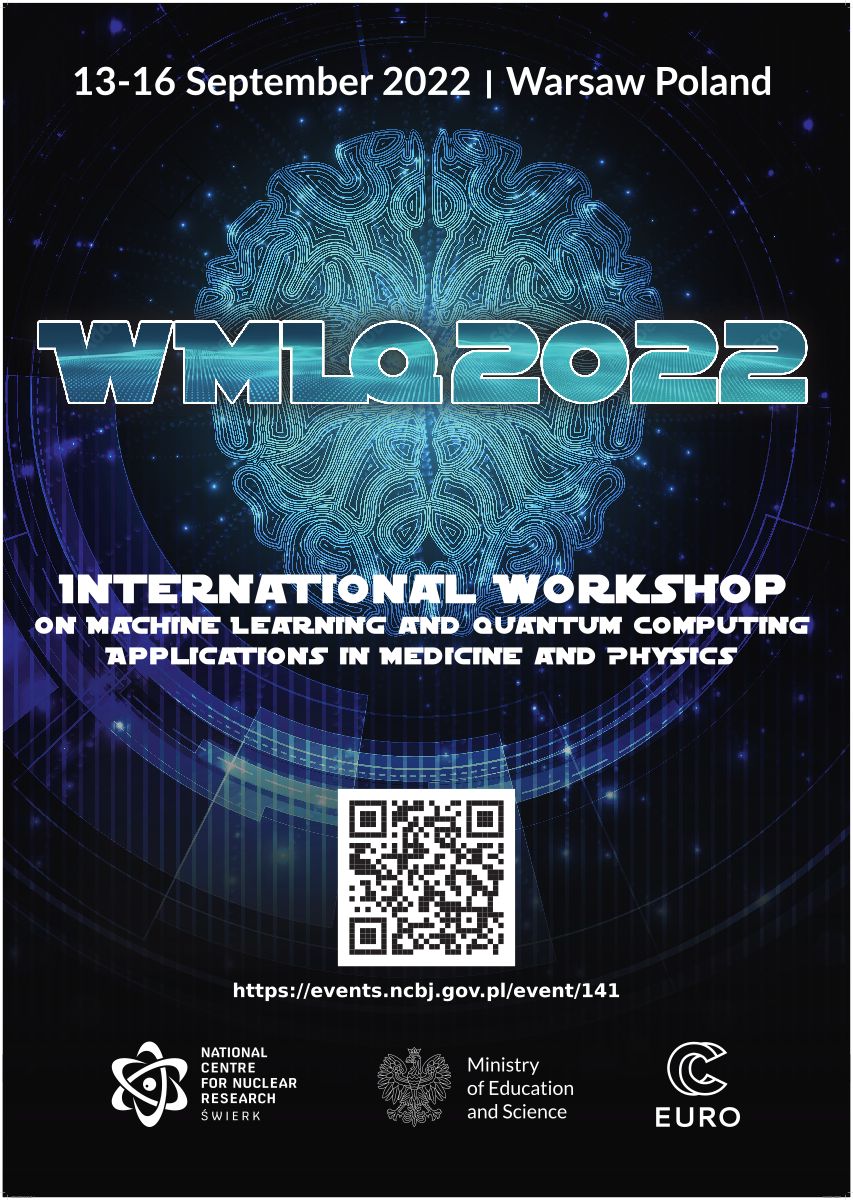


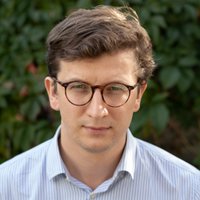



One of our two contributions to the International Geoscience and Remote Sensing Symposium IEEE IGARSS 2023 is available at arxiv.org/abs/2306.14515 . This piece of research explores an optimization procedure for #quantum kernels tailored specifically for satellite data analysis.










.Jakub Mielczarek now presenting #QuantumComputing Perspectives on #QuantumGravity IS Quantum Gravity Quantum Gravity 2025 Penn State News

